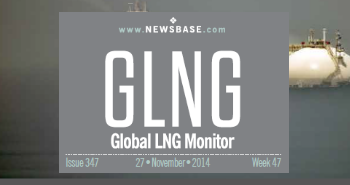Nigeria may need to explore new options to meet growing LNG demand, analysts say

Following the Russia-Ukraine war, many countries, especially in Europe, are reducing their dependence on pipeline gas from Russia and turning to liquefied natural gas (LNG). Africa’s LNG projects are attracting international investment owing to their scale and ability to serve growing global markets. Analysts from Oslo-headquartered energy intelligence firm Rystad Energy highlight Africa’s pivotal role in the global LNG market in the coming years.
According to Rystad Energy’s press release on April 29, the world’s LNG production will surge from 486mn tonnes per year (tpy) in 2024 to 755mn tpy in 2030, driven by increasing gas demand in regions with limited production capacity or access to gas pipelines. Africa is projected to account for about 20% of the world’s planned LNG capacity, roughly 93mn tpy out of a global total of 477mn tpy, analysts say. This includes projects that are being built, have achieved final investment decision (FID), or are still being planned.
Africa holds significant natural gas reserves, notably in countries like Nigeria, Mozambique, Equatorial Guinea, the Republic of Congo, Cameroon, Angola, Senegal, Mauritania and Tanzania. Given the continent’s central geographic position, African LNG can effectively supply both Europe and Asia.
With Nigeria in the lead, West Africa currently produces almost half of Africa’s LNG. In Nigeria, the primary LNG producer is Nigeria LNG Ltd (NLNG), operating a large onshore liquefaction plant on Bonny Island. This facility comprises six operational trains with a combined capacity of 22mn tpy, accounting for about 5% of global LNG production. An expansion project, Train 7, is underway and is expected to increase capacity by an additional 8mn tpy, bringing the total to 30mn tpy upon completion.
According to Rystad Energy’s forecast, Nigeria’s annual LNG exports are expected to grow by 20mn tonnes by 2030. To fully exploit its gas resources and meet both domestic and export demand, Nigeria might need to consider new options like floating LNG facilities (FLNG) and smaller mini-LNG projects.
“Nigeria has consistently ranked among the top LNG producers globally, despite export volumes being much smaller than those of the US, Australia and Qatar. Nigerian LNG, which is positioned outside the ongoing US tariff war, offers crucial flexibility for Asian and European buyers thanks to its strategic location and shorter transit times compared to US LNG exports,” says Antonia Syn, commodity markets analyst at Rystad Energy.
“However, ongoing pipeline vandalism and oil theft continue to hinder Nigeria’s ability to fully capitalise on its resources. While we expect Nigeria's LNG exports to recover, they are unlikely to place the country among the top five global exporters in the near future.”
West Africa supplied over 60% of Africa’s LNG exports in the past year, totalling 22.7 million tonnes, despite a drop in Nigeria’s LNG output. New onshore projects in Nigeria and Gabon, along with several FLNG developments planned over the next decade, are expected to raise the region’s liquefaction capacity to 50.6mn tpy by 2035.
While most of the region’s developed gas resources are onshore, about two-thirds of offshore gas remains untapped. These offshore reserves are well-suited for FLNG technology because of their reduced reliance on vulnerable pipeline infrastructure. According to Rystad Energy analysis, West Africa currently accounts for around 20% of global FLNG capacity, with room to grow if more offshore resources are developed for export.



Follow us online